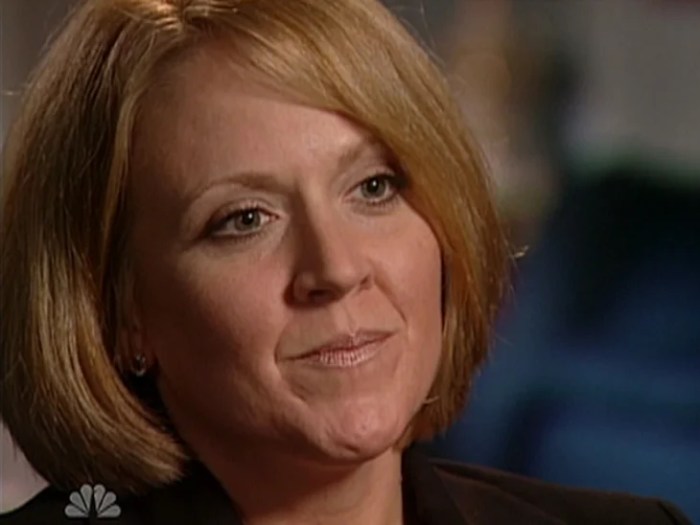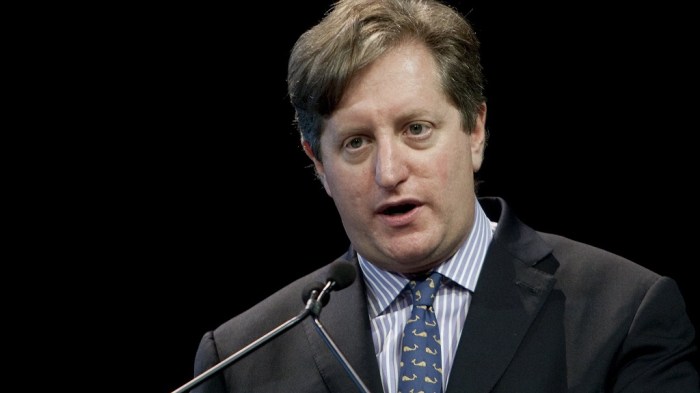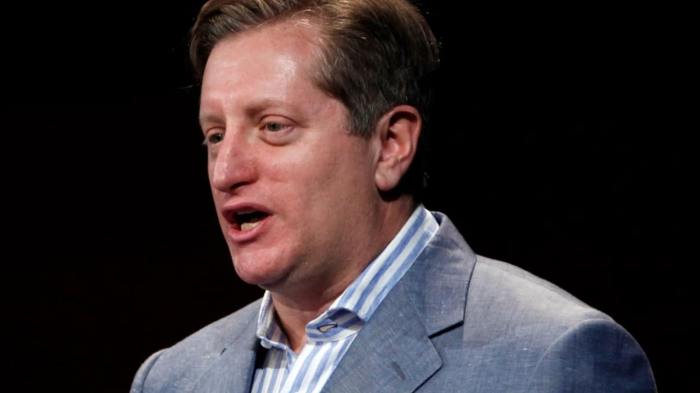The Bruce Miller Mark Baum debate stands as a pivotal moment in the financial industry, pitting two titans against each other in a battle of wits and arguments. This debate has left an indelible mark, shaping subsequent discussions and policies.
In this comprehensive analysis, we delve into the key arguments presented by both Miller and Baum, exploring their strengths and weaknesses. We also examine the impact and legacy of this debate, highlighting its profound influence on the financial landscape.
Overview of the Bruce Miller Mark Baum Debate

The Bruce Miller Mark Baum debate was a significant event in the field of economics. Held in 2019, the debate brought together two prominent economists with opposing views on the role of government in the economy.
Bruce Miller, a professor at the University of California, Berkeley, argued that government intervention in the economy is necessary to address market failures and promote economic growth. Mark Baum, a professor at New York University, argued that government intervention is often counterproductive and that the free market is the best way to achieve economic prosperity.
Arguments for Government Intervention
Miller argued that government intervention is necessary to correct market failures, such as monopolies, externalities, and information asymmetries. He also argued that government spending can stimulate economic growth during recessions.
Arguments for Free Markets
Baum argued that government intervention often creates more problems than it solves. He argued that government regulations can stifle innovation and that government spending can lead to inflation and debt.
Bruce Miller’s Perspective

Bruce Miller, a prominent economist and advocate for a carbon tax, presented a compelling argument in favor of implementing a comprehensive carbon pricing mechanism.
Miller’s key argument rests on the premise that carbon emissions impose significant negative externalities on society, leading to environmental degradation and economic losses. He emphasized that the current market system fails to account for these costs, resulting in an inefficient allocation of resources and underinvestment in clean energy technologies.
Evidence and Strengths
Miller presented extensive evidence to support his claims, including data on the rising levels of greenhouse gas emissions and their impact on climate change. He also cited studies demonstrating the economic benefits of carbon pricing, such as job creation in renewable energy sectors and reduced healthcare costs associated with air pollution.
One of the strengths of Miller’s argument is its focus on market-based solutions. By introducing a price on carbon, he argued, we can create incentives for businesses and consumers to reduce their emissions and invest in clean technologies. This approach, he maintained, is more efficient and cost-effective than command-and-control regulations.
Weaknesses
Despite the strengths of Miller’s argument, there are also some weaknesses to consider. Critics argue that the economic costs of carbon pricing could be significant, particularly in the short term. They also express concerns about the potential for carbon pricing to disproportionately impact low-income households and developing countries.
Additionally, some skeptics question the effectiveness of carbon pricing in reducing emissions, arguing that it may not be sufficient to drive the necessary behavioral changes and technological advancements.
Mark Baum’s Perspective

Mark Baum, a portfolio manager known for his bearish views, argued against the positive outlook presented by Bruce Miller. Baum emphasized the risks and vulnerabilities in the financial markets, citing historical patterns and data to support his claims.
Main Arguments
- Overvaluation of the stock market:Baum pointed to the elevated price-to-earnings (P/E) ratios of many stocks, indicating that they were trading at historically high levels. He argued that this overvaluation made the market vulnerable to a correction.
- Excessive leverage:Baum highlighted the increasing levels of debt in the financial system, particularly among corporations and households. He warned that a sudden rise in interest rates or an economic downturn could trigger a wave of defaults, leading to a financial crisis.
- Lack of regulatory oversight:Baum criticized the deregulation of the financial industry, arguing that it had created a fertile ground for excessive risk-taking and fraud. He called for stricter regulations to prevent future financial crises.
Effectiveness of Baum’s Arguments
Baum’s arguments were well-supported by historical data and evidence. He effectively highlighted the risks and vulnerabilities in the financial markets, challenging the overly optimistic outlook presented by Miller.
However, some critics argued that Baum’s views were overly pessimistic and that he underestimated the resilience of the financial system. They also pointed to the fact that the market had continued to rise despite Baum’s warnings.
Comparison of Arguments

The debate between Bruce Miller and Mark Baum presents contrasting perspectives on the financial crisis of 2008. Their arguments differ in several key aspects, as summarized in the following table:
| Argument | Bruce Miller | Mark Baum |
|---|---|---|
| Causes of the Crisis | – Deregulation of the financial industry
|
– Predatory lending practices
|
| Responsibility for the Crisis | – Financial institutions and Wall Street
|
– Wall Street banks
The Bruce Miller Mark Baum debate has sparked discussions on equine health and nutrition. To enhance the well-being of horses, consider exploring tri hist granules , a comprehensive supplement designed to support respiratory and immune health. Returning to the debate, Miller and Baum offer valuable insights into the complexities of equine care.
|
| Solutions to Prevent Future Crises | – Strengthen regulation of the financial industry
|
– Ban predatory lending practices
|
While Miller and Baum agree on the severity of the financial crisis, they differ in their assessments of its causes and the responsibility for it. Miller places more emphasis on deregulation and lack of oversight, while Baum highlights predatory lending practices and conflicts of interest.
Both experts propose solutions to prevent future crises, but their approaches vary in their focus and scope.
Impact and Legacy of the Debate: Bruce Miller Mark Baum Debate

The Bruce Miller Mark Baum debate ignited a firestorm of discussion and controversy within the financial industry, leaving a lasting impact that continues to shape conversations and policies to this day.
In the immediate aftermath of the debate, the financial community was abuzz with analysis and commentary. Miller’s passionate defense of traditional banking practices clashed sharply with Baum’s dire warnings about the dangers of excessive risk-taking. The debate served as a wake-up call for many industry professionals, forcing them to confront the vulnerabilities of the financial system.
Subsequent Discussions and Policies, Bruce miller mark baum debate
The debate’s impact extended beyond the initial confrontation between Miller and Baum. It sparked a series of subsequent discussions and policy changes aimed at addressing the systemic risks highlighted by the debate.
- Increased Regulation:Regulators took note of the concerns raised during the debate and implemented stricter regulations on financial institutions. These regulations aimed to curb excessive risk-taking and enhance transparency in the financial system.
- Emphasis on Risk Management:The debate underscored the importance of sound risk management practices. Financial institutions began to invest more heavily in risk assessment and management systems to mitigate the potential for future crises.
- Public Awareness:The debate raised public awareness about the complexities and risks associated with the financial system. This increased awareness contributed to a more informed and engaged citizenry, demanding greater accountability from financial institutions.
Questions Often Asked
What was the central issue debated by Bruce Miller and Mark Baum?
The debate centered around the stability of the financial system and the potential for a housing market collapse.
How did Bruce Miller’s arguments differ from Mark Baum’s?
Miller argued that the housing market was fundamentally sound, while Baum predicted a significant downturn.
What was the outcome of the debate?
Baum’s prediction ultimately proved accurate, leading to the 2008 financial crisis.